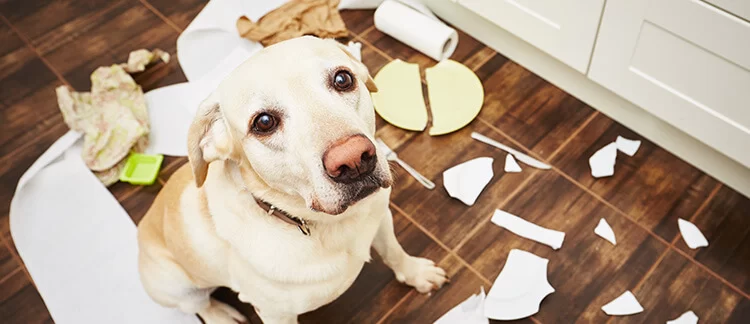- Understanding Separation Anxiety in Pets
- Common Symptoms of Pet Separation Anxiety
- Effective Solutions for Pet Separation Anxiety
- Real-Life Examples and Case Studies
- Trusted Veterinary Support at Hidden Brook Veterinary
Understanding Separation Anxiety in Pets
Separation anxiety is a common behavioral issue that many pets, especially dogs, experience when left alone. It can occur for various reasons, such as a change in routine, loss of a companion, or even a stressful experience. Pets with separation anxiety may exhibit signs of distress when their owners leave the house, making it essential to recognize the condition early on. If left untreated, it can lead to more severe behavioral problems.
Common Symptoms of Pet Separation Anxiety
Recognizing the symptoms of separation anxiety is crucial for providing the right care. Some of the common signs include:
- Excessive barking, whining, or howling when left alone
- Destructive behavior such as chewing furniture or scratching doors
- Accidents in the house, even if the pet is fully house-trained
- Pacing or constant movement when their owner is about to leave
- Salivating, drooling, or other signs of distress
If you notice these behaviors consistently when you leave your home, it's a clear indication that your pet might be suffering from separation anxiety.
Effective Solutions for Pet Separation Anxiety
Helping a pet manage separation anxiety often requires a combination of strategies. Here are some of the most effective methods:
1. Gradual Desensitization
This technique involves slowly getting your pet accustomed to being alone. Start by leaving them alone for short periods and gradually increasing the duration. Over time, your pet will learn to associate your departure with a less stressful experience.
2. Create a Safe and Comfortable Space
Designating a specific area in your home where your pet feels safe can significantly reduce anxiety. This could include a crate, a cozy bed, or a room with their favorite toys. Make sure the space is quiet and free from distractions.
3. Provide Mental Stimulation
Keeping your pet mentally engaged can help alleviate anxiety. Puzzle toys, interactive feeders, and regular playtime are great ways to keep their mind occupied. This can also distract them from the anxiety of being alone.
4. Use Calming Products
There are various calming products available that can help reduce your pet's anxiety. These include pheromone diffusers, calming collars, and anxiety wraps. Talk to your veterinarian about the best options for your pet.
5. Professional Help
If your pet’s anxiety is severe, it might be time to seek professional help. A veterinarian or a certified pet behaviorist can offer tailored advice and treatment plans that may include medications or behavioral therapy.
Real-Life Examples and Case Studies
Many pet owners have successfully managed their pets' separation anxiety with the right approach. For example, Sarah, a dog owner, found that by using gradual desensitization, her dog Leo became less stressed when left alone. She started with five-minute departures and slowly worked her way up to longer periods, making the transitions smoother for Leo. Another success story comes from Mark, whose cat, Whiskers, had severe separation anxiety. After using a calming pheromone diffuser and offering more playtime, Whiskers' anxiety was significantly reduced.
Trusted Veterinary Support at Hidden Brook Veterinary
If you’re struggling with your pet’s separation anxiety, seeking expert advice is always a good idea. At Hidden Brook Veterinary, we offer comprehensive behavioral consultations and can recommend the best solutions tailored to your pet's needs. Whether it’s behavioral therapy, medication, or simple lifestyle adjustments, our team is here to help your pet live a happier, less anxious life.












